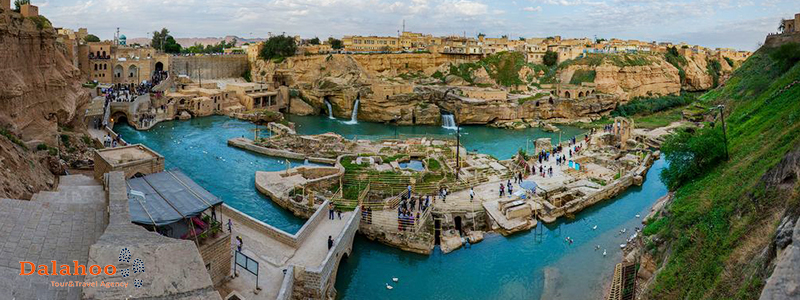
Located on the southwest side of Iran, Khuzestan occupies four percent of the volume of Iran. The Khuzestan province has borders with Lorestan province in the north, with the Persian Gulf on the southern and with Iraq on the west. There are plenty of attractions in Khuzestan. Traveling with train is one of the most convenient ways to reach Khuzestan. The south railway of Iran has stations in different cities of Khuzestan. You can travel to Khuzestan with plane as well. After reaching Ahwaz, the capital city of Khuzestan, there are plenty of cars to be hired in order to have visits to different parts of the Khuzestan province.

Bestowing the climate diversity, there a variety of attractions in Khuzestan to be visited: from the incredibly alluring coastline of the Persian Gulf on the south side to gloriously soaring mountains on the north and peacefully lush plains on the east. The composition of nature’s beauty with the history’s richness has made the Khuzestan a must-see destination among tourists. Here you will visit both waterfall and lake and historical heritages.
Susa can be the first point to start your journey. Located on the northeast side of Khuzastan, Susa has earned a place in the list of Unesco’s world heritages. The Susa archaeological site, which according to Unesco, “contains several layers of superimposed urban settlements in a continuous succession from the late 5th millennium BCE until the 13th century CE,” includes a group of haunting monuments such as Apadana Palace and the Susa Castle.
Once the winter palace for Achaemenid emperors, the Apadana was built under the command of Darius the great. The found Inscription contains an interesting report about the construction.
Soaring from the highest peak on the Susa’s hills, the Susa castle is built with a medieval-style architecture. The castle was originally the headquarter inhabited by the French archeology team in the 19th century.
Located at about less than 40km from Susa, the Chogha Zanbil is an incredibly glorious Ziggurat. The Ziggurat is considered to be the greatest heritage from Elam civilization. This magnificent brick-make construction is a Unesco-listed heritage and is described as, “the largest ziggurat outside of Mesopotamia and the best preserved of this type of stepped pyramidal monument.”
The museum is situated near the Ziggurat where discovered tools from the site and some pictures of the city’s discovery are on the show. The museum is rather small but well worth a visit.
One of the top highlights of anyone’s visit to Khusestan, the Shushtar Historical Hydraulic System is still in use for providing water for the city. It is not by chance that this Unesco-recognized heritage is considered as “a masterpiece of creative genius, that can be traced back to Darius the Great in the 5th century B.C.”
Khuzestan is where nature stages one of her greatest dramas. Before leaving Shushtar, keep an eye to see the beautiful Darion river. The river is a branch of the Karun river, which provides water for the plains called Mianab in Shushtar. If you are a nature enthusiast, do not hesitate to visit the lush forests here. The forests are the border between agricultural fields on the north side of the Karkheh river and the hills in Chazabe on the east side, near the border of Iraq.
Having a hot, humid weather, Khuzestan is the best destination for traveling in the second half of the year. As the climate drops in autumn and winter, the weather becomes more and more agreeable in the south and southwest parts of Iran.
Wear light and bring your trekking shoes. As the temperature drops in the cold season, it is a good idea to have an extra layer. Since you are going to visit rivers and spent time in the nature, being prepared is wise. Remember to bring your camera to record your memories of visiting Unesco-recognized heritages.
As Always, take care of natural and historical treasures. Just leave our footprints and take beautiful memories.